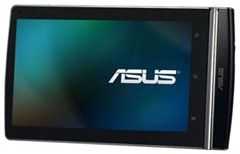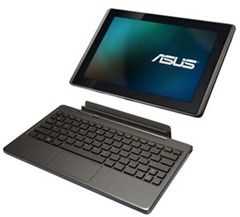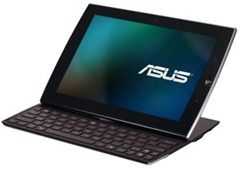At the beginning of the year, if you would have told me that, by the summer, there would be a dozen different Android tablets available for order from reliable, first tier manufacturers, I would have told you to get outta town. We were likely all desensitized to the constant stream of news that seemingly had the same message: “Company X announced the Y Tablet today. It features blah-blah-blah-blah-blah-blah-blah. No information was released on a launch date or pricing.” It had gotten to the point that I immediately went to the bottom of any announcement of a tablet-device, and if it had the standard blurb about no launch date or word on pricing, I did not read the article.
Read the full storyTag Archive | "android 3.0"
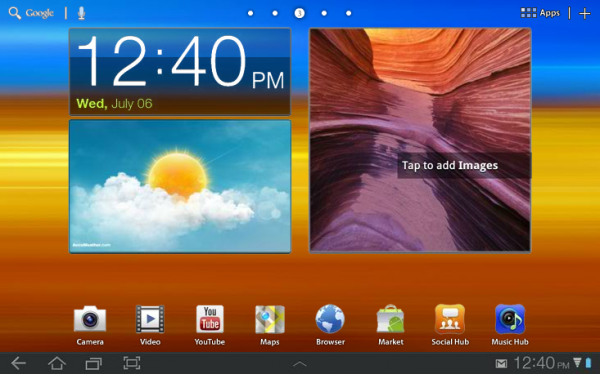
TouchWiz “Emulator” for the Samsung Galaxy Tab 10.1 Review Roundup
Posted on 09 August 2011
Breaking: The Samsung Galaxy Tab 10.1 TouchWiz Interactive Emulator just went live. Samsung calls it an emulator, but its really a simulator! Still, it gives you a way to play with TouchWiz before installing it on your device.
I am not a fan of OEM UI’s. I am even less of a fan when they are not optional (more on that later). User interfaces added onto a device by their OEM, instead of just using the one that is part of the associated OS, are always better when they can be enabled or disabled at the user’s discretion. They tend to be burdened with a lot of content that is just marketing or sell-through fluff, so being able to enable or disable them at will makes the bitter seed more palatable. 3rd party UI’s, in contrast, are designed to be competitive, and to make the developers money, and are therefore typically more lean and arguably provide more value. None of these trends have prevented Samsung from rolling out its TouchWiz UI for its flagship tablet, the Galaxy Tab 10.1, however, and maybe it is a good thing that they did.
We’ve taken some time to scour the web and bring you an aggregated perspective of how the media has received the software update so far. There are some good takeaways and some bad. Read on to familiarize yourself with the basics:
Software updates are big news these days. A press event to announce a new version of an OS would sell seats like a Justin Bieber concert, but to a much cooler crowd of people. There is no other tablet on the market today that is running Honeycomb with a custom skin, so Samsung’s release of the TouchWiz UX overlay is a first. My own exposure to TouchWiz (TW) was with an overlay for Windows Mobile 6.5. In that instance, it made sense. WM6.5 did not have much going for it in the GUI department, and Samsung took a very textual interface and made it graphical and object oriented.
The most noticeable thing that most of the reviewers picked up on is how TouchWiz on the Galaxy Tab 10.1 brings what is arguably Android’s biggest differentiator, widgets, to the forefront. Samsung has implemented a customized widget system that brings a slightly more appealing color palette and some added functionality. The new GUI version is very much about liveness of data, and goes a long way towards increasing awareness from the surface of the GUI without making you dig too much further into an app. Many views, like news and weather, are aggregated so that you spend less time bouncing through apps to get up to speed on the latest.
TouchWiz is, however, not just about widgets. Several new features come along for the ride with the update. One of those, Samsung’s MediaHub, reveals a pair of trends; one good, the other not so much so. The first trend is that there is this third tier of developer that is growing out of Android. You can think of it as Android being an engine, and developers using that engine as an SDK. But what is significant is that companies like Samsung and HTC who are going this route, are seeing the need to have their own media services coupled with the Android-flavored code-base their devices run on. MediaHub provides access to a lot of recent content, but it requires its own account and login credentials. The downside of this trend is the set of restrictions that we have seen on the rise concurrent with these services. In this case, Samsung restricts you to 5 devices that can access MediaHub content through one account. While it is unlikely that any one individual will have 5 Samsung devices, I am curious as to how MediaHub handles device retirement. Hopefully a little better than iTunes.
The major downside to TouchWiz is what might happen to you of you don’t opt-in for the upgrade. Reportedly, if you do not install TouchWiz, your Galaxy Tab 10.1 will not receive future updates to the OS. Now, it is unclear to me exactly how far this goes. Engadget reports that, at a minimum, it means no Ice Cream Sandwich upgrade. I would believe, however, that actual firmware fixes to correct a problem with the device would still be delivered. However, even for that, it is tough to have a high degree of confidence. If Samsung has to spin two versions of a firmware update (one for TouchWiz and one for non-TW), then I can see the company dropping support within a year. Of course, not every firmware update should have an interface to the classes that govern the UI, although it is feasible that some would. Either way, it sounds like if you have bought into the Galaxy Tab, then you have, by Samsung’s definition, bought into TouchWiz as well.
Regardless, most of the reviewers were pleased with the value and performance that the TouchWiz UI seemed to bring to the Galaxy Tab 10.1. The update will turn the current version of the Galaxy Tab 10.1 into the first Android Tablet to market with an OEM skin on top of Honeycomb.
Could TouchWiz set off a new trend of skinned Honeycomb devices? It all depends on how well the Galaxy Tab 10.1 does at retail. If it does significantly better than other tablets out there, that just might encourage other manufacturers to roll their own skins for Honeycomb. Right now, it seems like general consumers are driven primarily by price-point. The technoratti seem to be mainly encouraged by performance. Every Android lover is looking for the same immediate-response experience that the iPad delivers. TouchWiz will need to prove itself fast and unintrusive to make it a positive differntiator of the Galaxy Tab product.
Here are some links to the original Engadget review, as well as some additional perspectives from the usual suspects. Read on after the gallery for my more of my own assessment of what the TouchWiz UI may mean for users and Samsung.
Source: Engadget
Further Reading:
PhoneDog
CNET
PCMag
My personal assessment is that TouchWiz worries me, and the requirement to opt-in in order to continue to receive support firmly strikes the Tab 10.1 from my “I Want” list. A few key notes:
- On the Android platform, Samsung has had a poor record of quickness to deploy Android updates. I firmly believe this is due to the additional qualification time needed to test Android updates against their customized UI’s. They have gotten better, but are still not as quick to OTA as some others
- On Windows Mobile 6.5 (running on a Samsung Omnia II), one of the things I did not like about TouchWiz was the replacement of key apps with TW variants. So when you called up Calendar, if TW was enabled, you received a different view and different functionality in terms of input to create appointments, edit appointments, and so forth. This pervaded into text messaging, notes, and the phone view. in some cases, the TW variant was actually better, but in others it was not.
- The good thing was, you could disable TW in WinMo 6.5. Of course, it was all on or all off, so you got the better TW apps enabled along with the apps where you would have preferred to just run the native Windows Mobile version. This incentivized me to more often then not to run with TW disabled
- I have found a similar effect in HTC Sense (running on the HTC Evo 3D); the Calendar app is the HTC Sense variant, which is not a 1:1 replacement for the Android calendar. This gets aggravating when running several Android devices, and then going to a Sense device and having things oriented slightly differently than every other instance of the app that you run.
- This is where the overlay starts to get in the way of using the device rather than the overlay being a helper. The bad thing is, you cannot turn Sense off, and when running stock, the Calendar app is not even available as an app, only as a widget. Hitting the widget even, just launches the HTC Sense version of the Calendar app.
- If TW has similar hooks, then users who run more than one Android device may not see it as appealing a differentiator as Samsung would like.
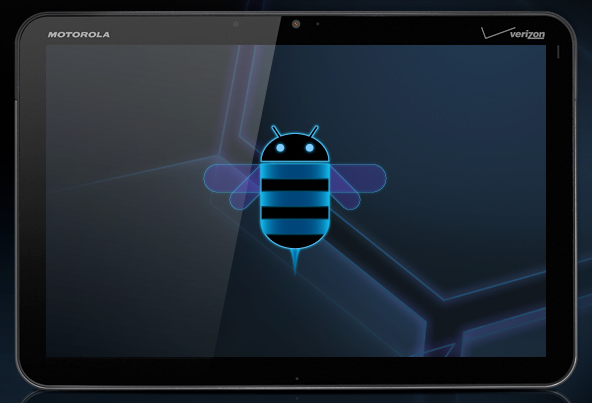
Editing HD Video with Movie Studio on Android 3.0 / Motorola Xoom [video]
Posted on 13 April 2011
 Tablets increasingly seem to want to go from companion device to dedicated device, but there’s a lot of catching up to do in terms of productivity before that can actually happen. Today, most modern smartphones are capable of capturing 720p video, that means that if a tablet wants even a chance at being a standalone device, it’s going to need to at least be able to edit those files.
Tablets increasingly seem to want to go from companion device to dedicated device, but there’s a lot of catching up to do in terms of productivity before that can actually happen. Today, most modern smartphones are capable of capturing 720p video, that means that if a tablet wants even a chance at being a standalone device, it’s going to need to at least be able to edit those files.
Android 3.0 (honeycomb) comes pre-baked with a Movie Studio application which wowed the press with what appeared to be full-fledged video editing on the tablet. But now that the Xoom [tracking page] is available to the public, we have to ask (and I can’t believe I haven’t seen people be more critical about this): Is the video editing really up to the task? You be the judge:
Incidentally, this video was shot, edited, and processed on an iPhone 4 (but not uploaded, damn YouTube file size limitations!).
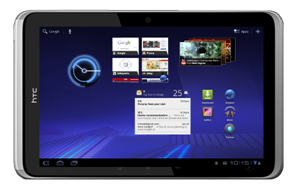
Honeycomb Upgrade Confirmed for HTC Flyer Tablet, but How Will It Work with Inking and HTC Sense? (Updated With HTC Response)
Posted on 06 April 2011
 After watching the official HTC Flyer intro video, you’ll see that a lot of the device’s identity relies on customizations made to Android 2.2 made by HTC. The inking, for example, is completely dependent on the proprietary HTC ‘Sense’ UI, which has been modified from it’s phone roots to play nicely with tablets.
After watching the official HTC Flyer intro video, you’ll see that a lot of the device’s identity relies on customizations made to Android 2.2 made by HTC. The inking, for example, is completely dependent on the proprietary HTC ‘Sense’ UI, which has been modified from it’s phone roots to play nicely with tablets.
HTC has now confirmed that the Flyer will receive an upgrade to Android 3.0 once it becomes available. On their official Twitter page, they responded to someone inquiring about Android 3.0 on the Flyer with this:
We will be offering a Honeycomb upgrade when it’s made available. What feature are you most excited about?
What is less certain is how this will impact the Flyer’s inking capabilities and the features that rely on the custom HTC Sense UI. For the time being, Google has delayed the Android 3.0 source-code which means that developers have not yet been able to get their hands on the raw software for modification. Google also may desire to keep a tighter grip on the modifications that they will allow to be made to the tablet-specific interface (likely to reduce the potential for fragmentation that has been seen with the smartphone version of the Android.
There’s also the issue that the HTC Flyer has capacitive Android buttons built into the bezel of the device while Android 3.0 moves these into the software… which would create an odd redundancy, or force HTC to disable the buttons on the tablet (or within the software).
I’ve reached out to HTC to find out whether or not they’ll be able to retain the important inking features, and whether or not they’ll be allowed to bring the HTC Sense interface over to Android 3.0. I’ll update this post if we hear anything back from them.
via NetbookNews
Update: HTC has responded, rather vaguely, when asked if they’d be able to make Sense and inking customization to Android 3.0 with the following:
HTC will continue to implement the popular HTC Sense experience on future Android updates.
I’ve asked for further clarification, but this seems to indicate that there will be no barriers to adding HTC Sense and inking to the Flyer post Android 3.0 update.
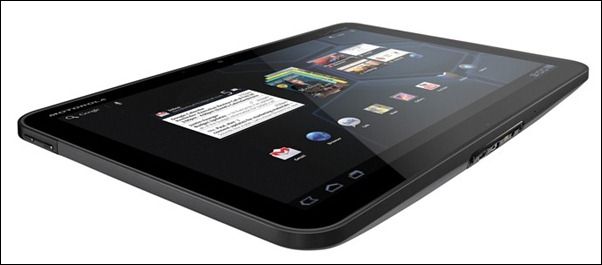
Motorola Xoom and Android 3.0 Overview Video
Posted on 31 March 2011
 We’ve got the Motorola Xoom [tracking page] on hand and have a nearly 30 minute-long overview session for you on video. You’ll be taken around the hardware of Motorola’s first slate and then we’ll dive into Android 3.0 (Honeycomb).
We’ve got the Motorola Xoom [tracking page] on hand and have a nearly 30 minute-long overview session for you on video. You’ll be taken around the hardware of Motorola’s first slate and then we’ll dive into Android 3.0 (Honeycomb).
WARNING: please turn your volume down around 0:30, 16:06, and 17:24. My phone vibrated during recording and it came out very loudly on the video, my apologies!
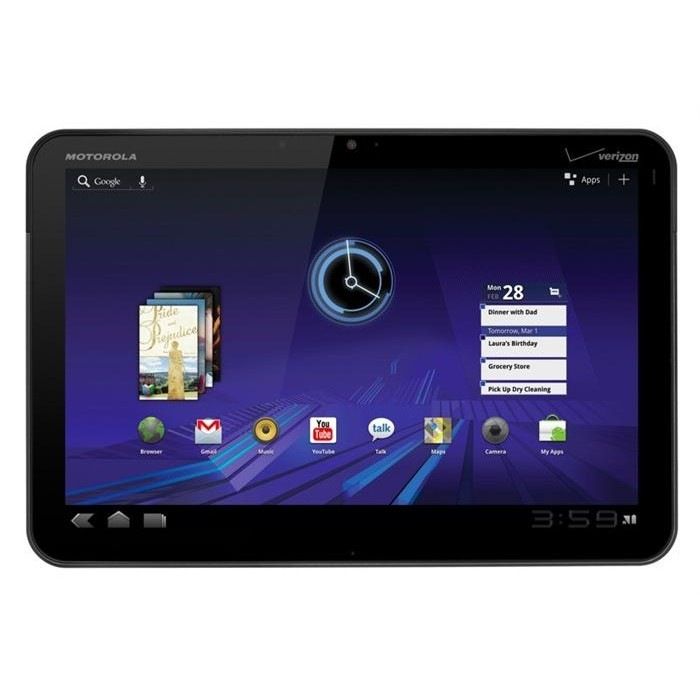
Questions that should be on your Motorola Xoom Checklist
Posted on 07 February 2011
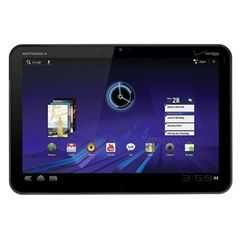 There is no doubt that the Motorola Xoom / Honeycomb combination has caused a lot of tablet buyers to hold-back on their purchases. It’s understandable because they will want to see what Android 3.0 and the dual-core processor offering really gives them in terms of value for money.
There is no doubt that the Motorola Xoom / Honeycomb combination has caused a lot of tablet buyers to hold-back on their purchases. It’s understandable because they will want to see what Android 3.0 and the dual-core processor offering really gives them in terms of value for money.
I’ve just finished adding the Xoom to the product database here and was quite impressed. The weight seems good and the additional barometer and gyroscope sensors could be useful when new applications start taking advantage of them. That’s one of the key things to think about with the Xoom though, the apps. How long will it take for applications to go, not only ‘HD’ with 10 inch screen support at 160dpi but to add fragments and support for multi-threading and the unique features of the Tegra 2 GPU?
I certainly want to get some quality time with the Xoom as soon as possible but in the meantime, I’ve scribbled a few notes down about things I DONT see mentioned in any specifications or marketing information.
- Video codec support. While Android 2.0 offers better streaming and media transfer capabilities, it doesn’t add much to the codec support. Of course, you can only include so much in an open-source operating system so it’s up to the manufacturer to add support in for other common formats. I don’t see any mention of WMV or DivX and the MKV container format. OGG? With an HDMI out port you’d expect multiple video codec support AND DLNA certification.
- Audio. Wireless audio transfer over Bluetooth (A2DP) isn’t easy and isn’t high quality. How about some APT-X support in the A2DP protocol Motorola for some CD-quality wireless audio?
- Browsing speed. Just how fast is the dual-core processor going to make it. I estimate that 2.2 was about 20% faster than 2.1. That 2.3 added little but that the dual-core CPU under Android 3.0 should add another 20% speed improvement. You’ll be looking at netbook browsing speeds. What’s the tab-limit? Is it still 8 tabs?
- Battery life. So far we’ve seen average battery life figures coming from Tegra 2. The 2nd core WILL add to the power envelope and with Dalvik attempting to use both cores, it might impact battery life. With a weight of 730gm though I expect Motorola have at least squeezed in a 20wh battery pack. It’s going to need it. That 10 inch screen is LED backlit from what I can tell. Would it be nice to have a single-core long-battery life mode?
- Size. 10 inch is great for reading large amounts of text and perfect for the new generation of tablet-based magazines and newspapers. Unfortunately, 720 grams isn’t. Watch out for that if you are thinking of going handheld for any length of time.
- USB OTG. I don’t see any mention of this so there’s no way to plug a USB keyboard and mouse in. Or a USB stick. Or that fantastic idea that Nokia use, the USB OTG TV and radio receiver.
- Mic Array. For HQ video and audio calls (a feature of Honeycomb) I’d expect to be able to use the device without headphones. A dual-mic array can really help here.
- HD cam Does it have continuous auto-focus? Are there any camera features over and above what Honeycomb provides? Probably not. And what about the quality of the optics?
- Stereo speakers? I only see one speaker port on the device.
- FM radio / transmitter. FM radio is still the lowest-power method of receiving audio broadcasts. An FM transmitter will help get that audio to the back seats of the car for the kids to watch a video together.
- Removable battery. One to note because it doesn’t have one, like most tablets.
- Is the headphone port a headset port?
- Analogue video out Unsupported I believe.
- Stand. Flip out stands are worth having.
- Voice call capability? SMS, MMS capability. EU video calling?
- Consumer IR. I still don’t understand why these don’t appear on tablets. A TV-remote app would be the ultimate in laziness.
- Multi-track audio pass-through via HDMI. If the unit can’t handle AC3 or similar, you might not be able to play the audio. The same problem occurs on the Galaxy Tab and it is annoying!
- Haptic feedback / vibration notifications
- Split keyboard for two-handed use in landscape mode?
- Tethering to phone for non-3G use?
- Scratch resistant touchscreen?
Is there anything else you’re wondering about?
The Motorola Xoom is going to be a breakthrough device, make no mistake. Honeycomb finally stamps the ‘tablet’ seal of approval on Android and the dual-core Tegra 2 platform is going to shine. There are some nice accessories too but don’t let all the marketing fuzz distract you from your task of finding a tablet that suits YOU! Make that checklist now!
The Motorola Xoom specifications are now in the database.
More on tablet design:
Making a HIT. (Your Checklist for a Quality Handheld Internet Tablet)
Things to Consider when Designing or Buying a Tablet-Style Device
Notes on productivity issues with Tablets:
30 iPad Productivity Problems.
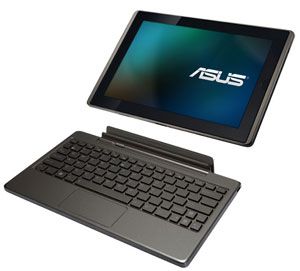
Asus Get Official With Four New Tablets [Video]
Posted on 05 January 2011
Chippy is working hard over at CES 2011 and yesterday live blogged the Asus press conference in which Asus announced four new tablets.
Eee Slate EP121 [product tracking]
 The Eee Slate is the only Windows based product of the bunch but comes packed with a 1.33Ghz Intel Core i5-470UM processor, 2 or 4GB’s of memory and either a 32 or 64GB SSD drive. The 12.1 inch (1280 x 800) IPS display is capacitive multi touch but also includes a Wacom digitizer for pen input using the included stylus. For a svelte 1.1kg it certain packs a punch and should move Windows 7 Home Premium along nicely.
The Eee Slate is the only Windows based product of the bunch but comes packed with a 1.33Ghz Intel Core i5-470UM processor, 2 or 4GB’s of memory and either a 32 or 64GB SSD drive. The 12.1 inch (1280 x 800) IPS display is capacitive multi touch but also includes a Wacom digitizer for pen input using the included stylus. For a svelte 1.1kg it certain packs a punch and should move Windows 7 Home Premium along nicely.
Eee Pad MeMo [product tracking]
This 7.1 inch Android 3.0 aka honeycomb tablet packs a 1024 X 600 capacitive touch display and also includes a stylus. The dual core 1.2GHz Qualcomm 8260 processor is capable of pushing out full 1080p footage through the devices mini-HDMI port. Front and rear cameras grace the device, the later with a flash.
Eee Pad Transformer [product tracking]
The Eee Pad Transformer comes with a neat detachable keyboard for use as a tablet or a netbook style device. Packing Nvidias Tegra 2 processor, it too is capable of 1080p output via a mini-HDMI port and the 10.1 inch 1280 x 800 IPS screen is capacitive multi touch. All this combined with 16/32/64GB storage options, front and rear cameras and Android 3.0 should mean this could be quite the convergence device.
Eee Pad Slider [product tracking]
The Eee Pad Slider is specification wise, much the same as the Transformer, although only 16/32GB storage options will be available. What could be a great form factor for you tablet lovers who demand a keyboard, this comes with a slide away keyboard for the best of both worlds. Weighing a little heavier that the transformer its still well below 1kg and again comes packing Android 3.0.
All the products are now in the database and more images will be added soon.
UPDATE: Thanks to jkkmobile here is some video of the Transformer and Slider in action.
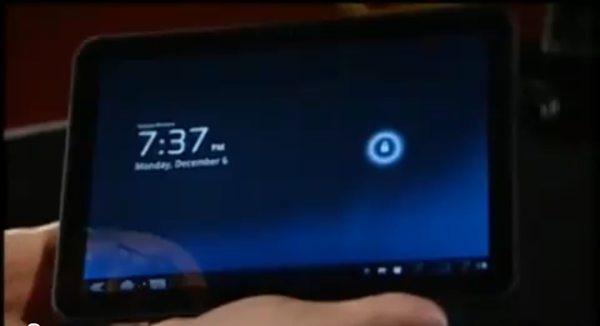
Motorola Teases a Tablet… Google Shows it off on Video
Posted on 21 December 2010
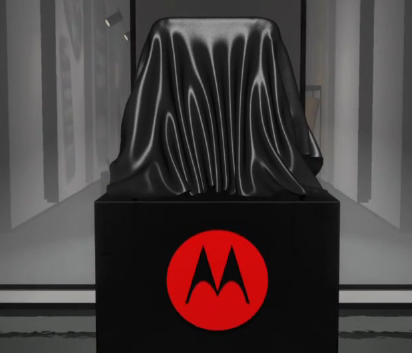 Motorola recently posted a rather humorous video teaser for an upcoming tablet product on YouTube. Their video isn’t too original with its play on the tablet pun as it runs through various “tablets”, from the Rosetta Stone to the 10 Commandments. There’s a brief and humorous sentence about each tablet, including the iPad “It’s like a giant iPhone but… it’s like a giant iPhone” and the Galaxy Tab “Android OS, but Android OS… for a phone”, then the video pans over to a veiled product with a Motorola logo beneath it. A bee flies out as the video comes to an end, complimenting the video’s description, “we’re buzzing with excitement to be the next chapter in tablet evolution”.
Motorola recently posted a rather humorous video teaser for an upcoming tablet product on YouTube. Their video isn’t too original with its play on the tablet pun as it runs through various “tablets”, from the Rosetta Stone to the 10 Commandments. There’s a brief and humorous sentence about each tablet, including the iPad “It’s like a giant iPhone but… it’s like a giant iPhone” and the Galaxy Tab “Android OS, but Android OS… for a phone”, then the video pans over to a veiled product with a Motorola logo beneath it. A bee flies out as the video comes to an end, complimenting the video’s description, “we’re buzzing with excitement to be the next chapter in tablet evolution”.
I’m going to say, with a decent amount of confidence, that this device is going to use Android 3.0 (aka Honeycomb).
 I suppose I can’t actually claim to be guessing, as I’ve already seen the tablet shown off on video, thanks to Notebook.com’s heads up. During Andy Rubin’s interview at the 2010 D: All Things Digital conference, he whips the device out and takes it for a spin. We’ve got a larger version posted inline for your convenience.
I suppose I can’t actually claim to be guessing, as I’ve already seen the tablet shown off on video, thanks to Notebook.com’s heads up. During Andy Rubin’s interview at the 2010 D: All Things Digital conference, he whips the device out and takes it for a spin. We’ve got a larger version posted inline for your convenience.
The video is the first time I’ve seen some quality Android 3.0 action, and I’m very surprised how similar to Windows parts of the interface are. Have a look and let me know if you also think you could ask better questions than the moderators in your sleep.
 |
| |||
 |
| |||
 |
| |||
 |
| |||
 |
| |||
 |
| |||
 |
| |||
 |
| |||
 |
| |||
 |
|




